by California Casualty | Firefighters |
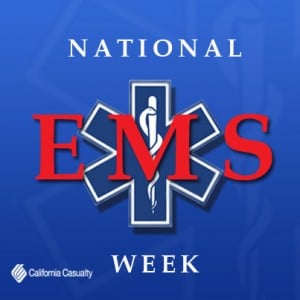 Have you stopped to thank an emergency medical services worker? Now is the time!
Have you stopped to thank an emergency medical services worker? Now is the time!
Whether it was lifesaving medical treatment at an accident scene, search and rescue at a major disaster, transportation to the hospital during a heart attack or stroke, or specialized care for the nation’s first Ebola patient, millions owe their lives to EMS professionals.
California Casualty is joining millions of Americans in thanking those who work in emergency medical services during National EMS week, May 17-23 – set aside to recognize the safety, honor and the dedication of those who provide the day-to-day lifesaving services of medicine’s “front line.” The observance began in 1974 and has grown along with the profession.
You can help thank EMTs, paramedics and other first responders in a variety of ways:
- Order pizzas or prepare a meal for your local ambulance company or fire station
- Create goody bags with treats, discounts at local restaurants or movie tickets for EMS personnel
- Host a neighborhood celebration and invite EMS personnel to join the fun
- Learn CPR
- Help create an EMT or Paramedic of the Year Award for your community
- Join events that honor and remember fallen EMS workers
- Write thank you notes and take them to a fire station or local ambulance company
- Paint some thank you banners or posters and put them up along main streets or roads where EMS people will see them
The national organization for EMTs also urges emergency medical service practitioners to host open houses, teach CPR, give injury prevention tips and offer ride-alongs to help spread the word and create better awareness about the important work EMTs and paramedics perform for our communities.
California Casualty makes it easy to give a salute to EMS professionals with our Nominate A Hero program. Numerous EMTs and paramedics have received a $250 gift card and have been recognized on the Hall of Heroes page at www.nominatemyhero.com. Thank your EMS hero with a nomination for the monthly award.
California Casualty also thanks EMS personnel for their hard work with the chance to win a custom Harley-Davidson® Road King or $25,000 in our Work Hard/Play Hard contest. Details and entry forms can be found at https://go.calcas.com/harley.
Resources for this article:
https://www.acep.org/emsweek/
https://www.naemt.org/ems_agencies_audience/ems-week/10-ways-to-celebrate-ems-practitioners
by California Casualty | Firefighters |
Jeff Bryan is a firefighter who doesn’t let adversity keep him down. Jeff returned to full time work in March 2015, just slightly less than a year after his right leg was amputated below the knee. Jeff severely injured that leg in a 1991 skiing accident in Colorado. He “limped by” in pain until doctors determined the leg had to be removed. Jeff, who is a firefighter and EMT Intermediate with the Ute Mountain Fire Department in southwest Colorado, refused to let the amputation keep him down. He was released from the hospital on his 50th birthday. He says there were two ways to go: give up and feel sorry for himself or push forward and beat it – he chose to move beyond and conquer it.
As soon as he was able, he started bicycling, ice climbing, paddle boarding, swimming and yoga. As far as anyone can determine, Jeff is the only firefighter in Colorado to return to full-time active duty after a leg amputation. Jeff does not want to be known as the firefighter who lost a leg, but the guy who works hard to stay in shape and be the best EMT/firefighter he can.
What’s his philosophy and how does he train? He spells it out here in his own words:
In 1991, I suffered a commuted fracture of my tibia while skiing in Breckenridge, CO. It was during this injury that I first trained to get my life back.
In 2011 I had an ankle replacement. I once again undertook the task of regaining my fitness; however, I never regained my top physical condition. For the next 3 years I worked in unbearable pain. I basically, worked, slept and trained in the gym. I developed high blood pressure. I was getting sick.
On March 20, 2013 I worked a 72. On the 23rd I clocked out and headed to Vail to meet my doctors. Four days later, I was told my best option was amputation. I spent the next three days lying in bed. During this time I made the decision that failure was not an option.
On April 22, 2014 I had a below the knee amputation. I went for an Ertl amputation since I qualified. The Ertl procedure is designed to build muscle and preserve bone that will support prosthetic devices for those who plan to be active. The surgery went well and I was released from the hospital 4/26, my 50th Birthday.
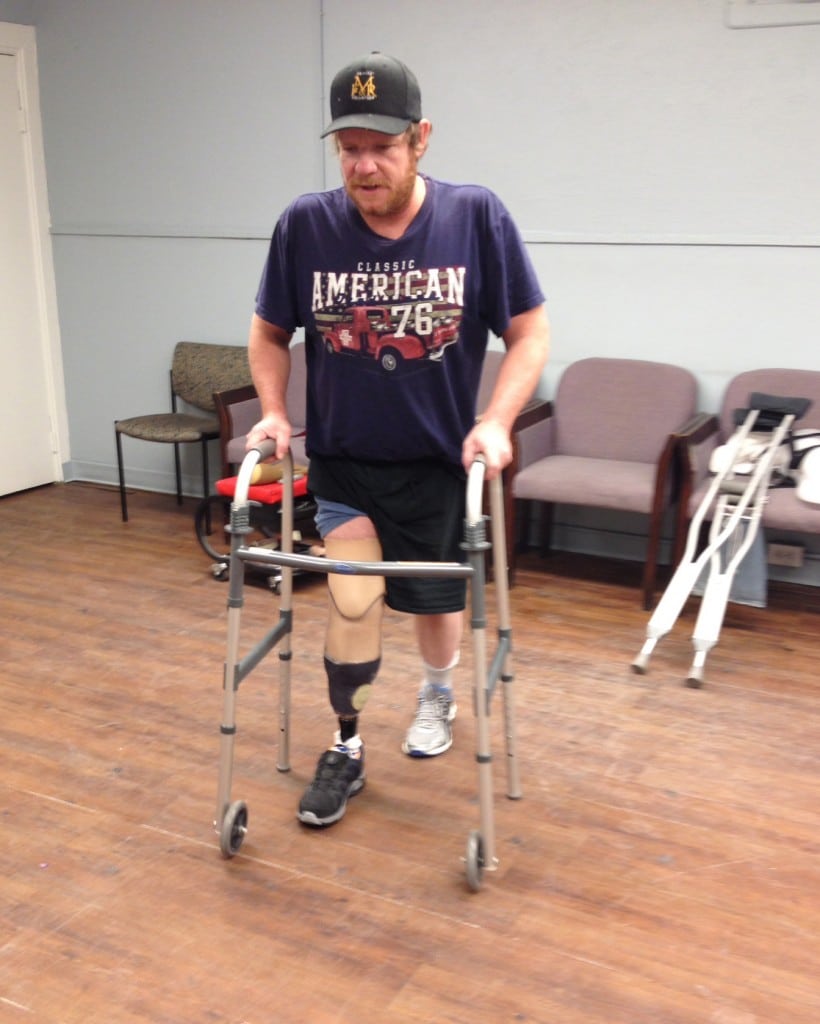
Now 30 pounds overweight, I had a huge undertaking. I needed to lose the 30 pounds and fulfill my goal of returning to active duty. 50 years old, overweight and now an amputee!
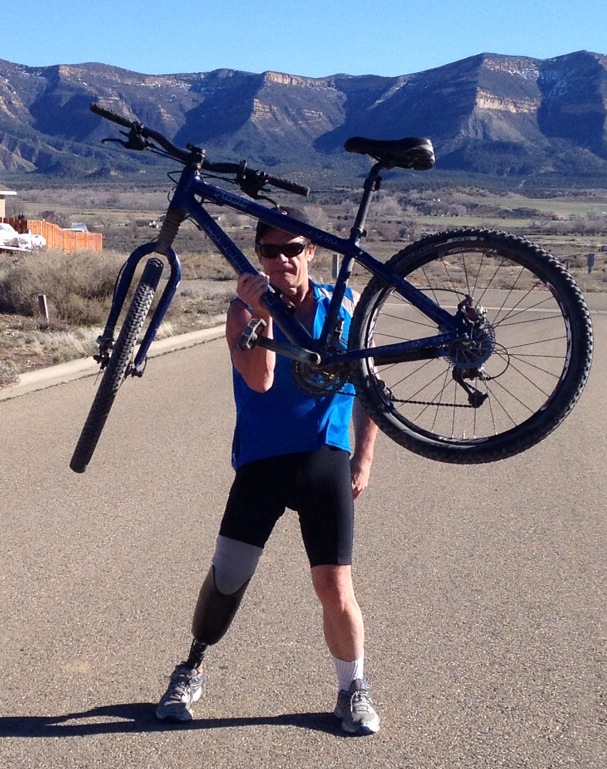
I started out just the way I did in 1991. At four weeks I started riding the bike with one leg. At six weeks I received my first prosthetic and was on my way to PT. I followed my instructions to a tee. I continued to bike and work on balance. At this time I also started yoga.
At my age I did not need to increase my calorie intake above 2000 calories a day. I eat a balanced diet, consisting of plenty of fruits and vegetables, chicken and grass fed beef, which I purchase by the half cow. Once a week I splurged and enjoy a bowl of Ice cream. I drink water, 10-12 glasses a day. I never drink soda.
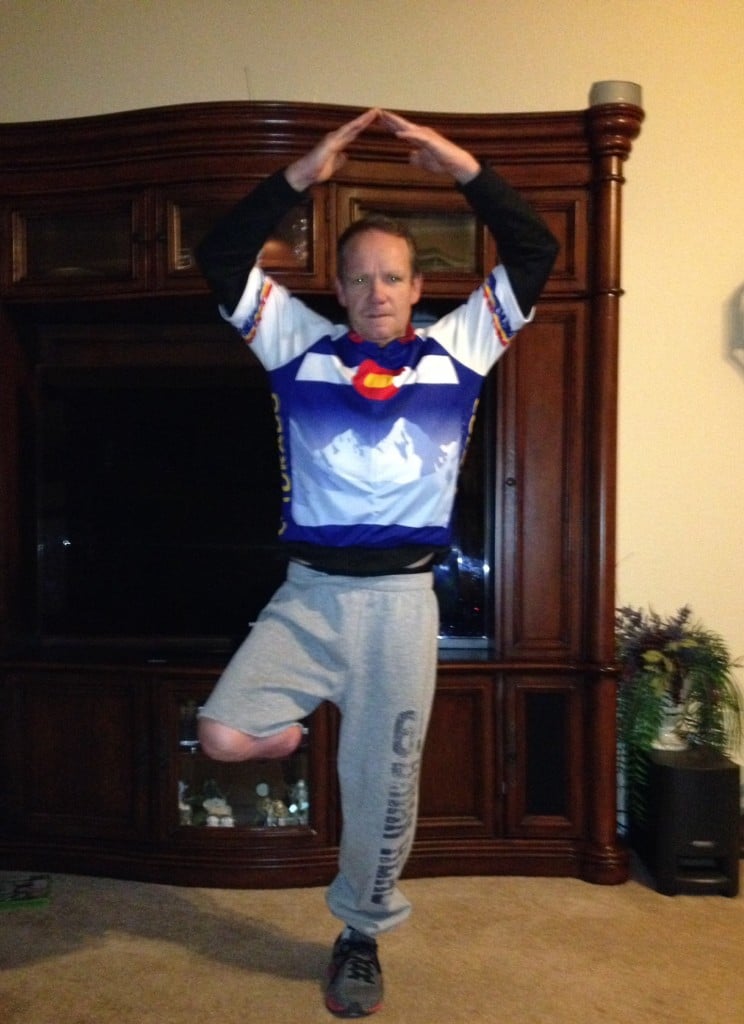
Within a week of getting my first prosthetic I went out on my stand up paddle board. I spent a lot of time swimming, paddling, spinning and lifting. I am a firm believer in high reps, low weight.
We all hear the term crossfit. I do not do a crossfit program. I am a firm believer in cross training, consisting of cardio, core, flexibility and strength training. As I progressed, I started to add new activities. In July, I started rock climbing. In August, I started biking outside.
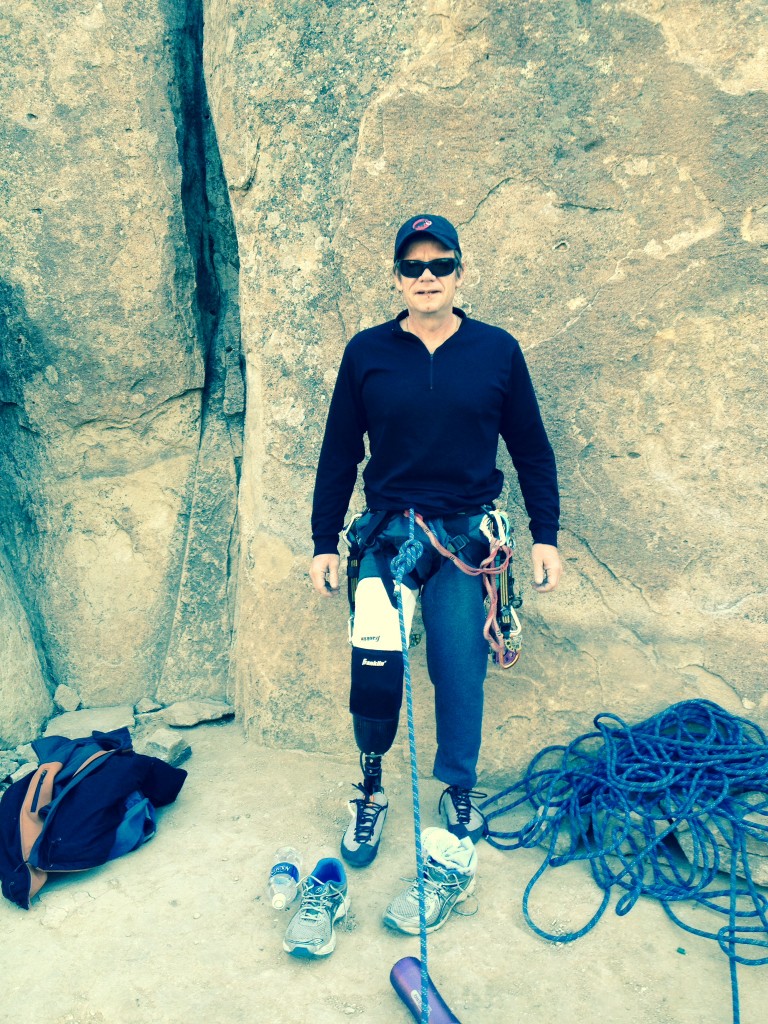
At 50 years old, avoiding injury is key. Yoga or a good stretching routine should be done daily. Cardio should be done a minimum of three days a week. I prefer four or five, but three will work. I do weight training four days a week. All my weight lifting is done either after cardio or after I ride my bike to the gym. I never lift heavy. I keep my reps at a minimum of 12. I usually do sets of 16-24. I lift for endurance, strength and elongated muscle. Heavy lifting will not only decrease flexibility, it will Increase your risk of injury.
The idea is to move fluidly between cardio and strength while resting as little as possible. As I progressed I added more activities. I started to climb ice, backcountry ski, bike hard and stick to my routine. The idea is to mix it up and have fun.
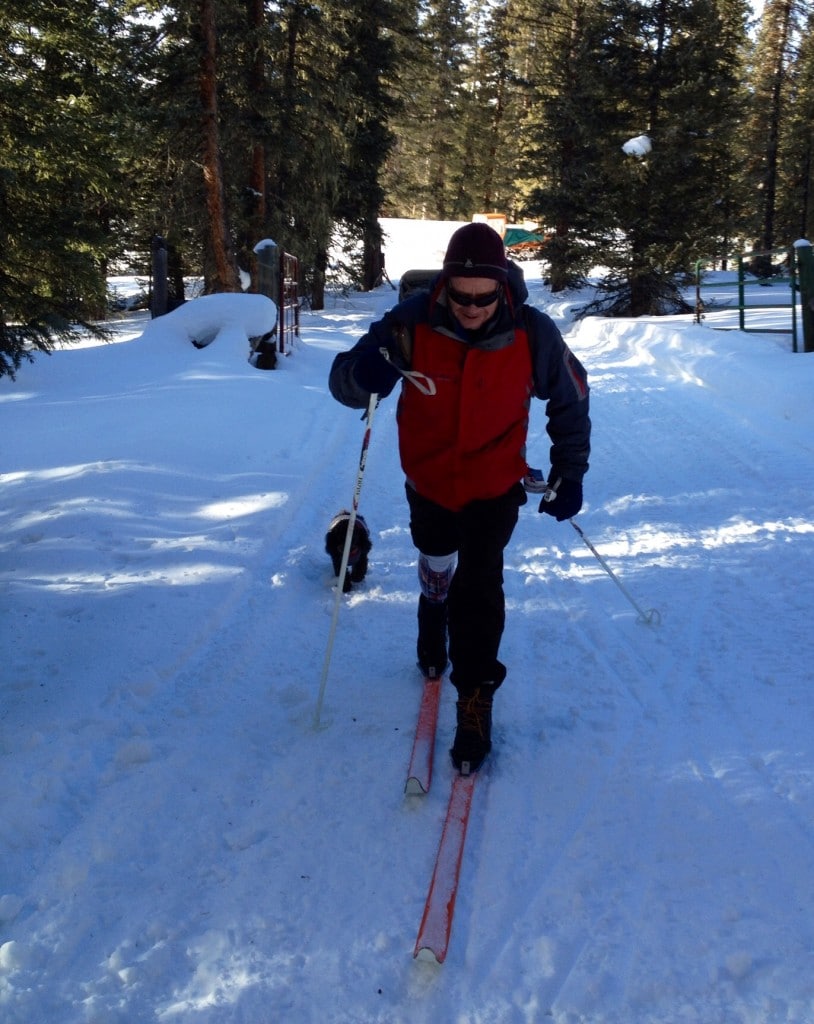
In January I started ice climbing again. I was climbing strong and climbed as much as I could. I started riding single track on my mountain bike in March. I mix it up as much as possible. Your workout should not be a chore, it should be fun. If you’re not having fun, try something different. Start slow and increase your intensity. I add weight very gradually. I make sure I can do a set of 24 before I up my weight. My bike rides started out at five miles. I am now averaging about 25 per ride on my road bike and 10 miles a day on single track. Just remember Cardio, Core, Flexibility and Strength.
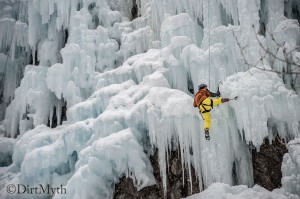
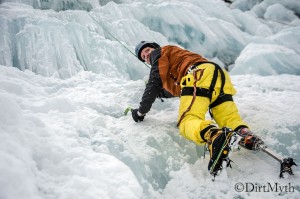
As the seasons change, I take advantage of the weather. I cross country ski, climb, bike or paddle. I still do a minimum of four days lifting; once again, never with heavy weight. I am a true believer that flexibility, elongated muscle, core strength and endurance is the key, especially for firefighters and first responders (more on that in coming articles).
And, all this is working. At nine months I was cleared for full duty by my doctor. At 11 months, I had cleared my final physical. In March, I returned to full duty as a line firefighter and my first shift was 3/7/15.
*Note- Jeff completed the first 30 days of his 90 day probation on April 7 without any issues. He is committed to being the best first responder he can, serving the Ute Mountain Ute Tribe of Southwest Colorado.
by California Casualty | Safety |

There’s a lot of debate about the spring time change; it’s nice to get more daylight but the effects may not be worth it – kids are tired and cranky and many of us are exhausted from losing the hour of sleep. If you are feeling “out of sorts” the week after the change to Day Light Saving (DST), you are not alone. Many sleep experts say messing with our sleep can cause some real health concerns for the heart and the brain.
A 2012 University of Alabama study confirmed the results of an earlier study in Sweden that found a spike in heart attacks the first week of DST.
Numerous studies have shown a 10 to 15 percent rise in traffic accidents the two weeks following the “spring forward” in time.
Educators
Students appear to be affected too. A 2009 study in the journal Sleep Medicine found that, overall, kids were sleepier than usual during the day for three weeks after the time change. The authors of the study suggested that no tests should be given during the first week or two after the switch to DST.
Shift workers – police officers, firefighters, EMTs and nurses – are not immune either.
Tired Blues for the Men and Women in Blue
A study in the Journal of American Medical Association (JAMA) found 40 percent of law enforcement officers had a sleep disorder and just under half admitted to falling asleep while driving, a quarter of those reported doing so at least one or two times per month. The percentage of drowsy driving increased for officers on night shifts. With Daylight Saving and the loss of a precious hour of sleep, already disjointed sleep patterns can be even more affected. The JAMA study concluded that a sleep deprived mind was found to produce officers with a higher rate of reporting serious administrative errors, making safety violations attributed to fatigue, exhibiting anger, falling asleep while driving or during meetings, and absenteeism.
Fatigued Firefighters and First Responders
A study by the International Association of Fire Chiefs (IAFC) warned that that “sleep deprivation [among firefighters] may be responsible for the disproportionally higher fireground injury rates observed early in the morning hours.” It also showed that fatigue when driving may increase the risk of crashes following work hours. Again, switching to DST appears to exacerbate the problem.
Nodding Nurses
Do you know a nurse who isn’t tired? In a study of hospital staff nurses, almost 600 out of 900 surveyed reported at least one episode of drowsy driving and 30 nurses admitted they experienced fatigued driving following every shift they worked. For nurses who worked only night shifts, the percentage rose to almost 80 percent. For many, the time change only makes the problem worse. A sleep deprived mind is not good for patient care and workplace harmony.
Sleep Tips
Here are some possible solutions from WebMD and the American Academy of Sleep Medicine to relieve the effects of DST:
- Expose yourself to bright light during waking hours and no light at nighttime
- Practice good sleep “hygiene:” limit or reduce caffeine and alcohol, create calming rituals before bed to gradually relax and, exercise several hours before bedtime
- Take low doses of melatonin, a substance that helps regulate cycles of sleep
- Take the Monday after the time change off if you feel too sleepy to work or drive
The good news is that within a few weeks, our bodies and brains begin to adjust to the new sleep schedule.
Don’t Forget the Smoke Detectors
This is also the time to replace the batteries in smoke detectors and carbon monoxide alarms. Fire officials say working smoke and carbon monoxide alarms save lives and protect property.
Get Protection
The switch to Daylight Saving, with more tired drivers on the road, should be a reminder that now is a prudent time for a policy review to make sure you have the right auto and home insurance protection at the best value. Call today and talk to a California Casualty advisor at 1.800.800.9410, or visit www.calcas.com.
Read more about the effects of the spring time change at
https://articles.mercola.com/sites/articles/archive/2013/03/07/dst-change-increases-heart-attack.aspx
https://www.sleepeducation.com/news/2013/03/11/why-accidents-increase-after-spring-forward-to-daylight-savings
https://jama.jamanetwork.com/article.aspx?articleid=1104746&resultClick=3
https://www.iafc.org/sleep
https://www.ncbi.nlm.nih.gov/books/NBK2645/
by California Casualty | Auto Insurance Info |

The changing of the seasons is nice; the heat is replaced by crisp, cool air, we can dig out our favorite sweaters and hoodies and most of us can stop mowing the lawn. However, there is one part of the upcoming winter that I’m dreading – that first storm of the year that starts warm but chills down so quickly it turns sleet and melted snow into a glaze of ice. Traffic will be snarled as drivers with worn tires try to navigate around town. We’ll know the ones who haven’t checked their tire tread; they’ll end up slipping and sliding, causing accidents and clogging major thoroughfares. It happens every year, and if you’ve never seen it yourself check out this video (be aware it does contain some adult language).
And that’s in Colorado, where people should know about having the right tires for winter conditions.
Before you lose your grip this winter, make it a point to have your tires checked. They are the essential piece that keeps your vehicle on road surfaces, protecting you and your children, even when streets become slick with snow and ice.
How do you know which tires will give you the best grip and control when temperatures plunge and roadways freeze? Consumersearch.com analyzed owner reviews and expert tire tests from around the world to come up with its four best snow tire picks for 2015:
- Bridgestone Bizzak WS80 (best winter tire)
- Nokian Hakkapeliitta 8 (best studded snow tire)
- Michelin Pilot Alpin PA4 (best winter performance tire)
- Michelin Latitude X-IceXi2 (best winter tire for SUVs and trucks)
Consumer reports also rated numerous all-season tires for best winter performance and recommends:
- Michelin Defender (all-season)
- Continental PureContact (performance all-season)
- Michelin Ice X13 (winter)
Treading Lightly
Many of us wonder if the tires on our vehicles have enough rubber for treacherous conditions. One determiner is the penny test. Car experts say using simple coins can determine how much tread is left on your tires.
Take It Easy
The Weather Channel says no matter what type of vehicle you drive or the tires you choose, staying off roads in severe winter conditions is your best bet. If you must travel, they offer these safety tips:
- Decrease speeds and leave plenty of room to stop
- Brake gently to avoid skids
- Turn on lights and keep lights and windshields clear and clean
- Use low gears to keep traction
- Be especially careful on bridges, overpasses and infrequently traveled roads that are likely to ice up quickly
- Keep an emergency kit in your vehicle
Let’s face it, even in the best weather conditions accidents happen. Don’t be skating on thin ice when it comes to insurance – make sure your auto insurance policy offers the best protection at the best value. Call a California Casualty advisor today for a free, no hassle policy review and comparison at 1.800.800.9410; the savings could warm your heart and pocketbook.
Sources for this article:
https://www.youtube.com/watch?v=AX_KyLuhdDQ
https://www.consumersearch.com/snow-tires
https://www.consumerreports.org/cro/tires/best-and-worst-tires-in-all-weather-conditions
https://maps.weather.com/activities/driving/drivingsafety/drivingsafetytips/snow.html
https://www.pennytest.com/
https://www.ready.gov/car
https://www.fema.gov/media-library-data/1408633655071-32caae446efef4ab2f4fcccdb55f725c/PrepareAthon_WINTER%20STORMS_HTG_FINAL_508.pdf
by California Casualty | Nominate a Hero |
Corporal Phil Arnzen and Deputy Austin Smith are nominated for their bravery, courage, and for going above the call. Both were dispatched to an accident call to where the vehicle had left the road, overturning into a ditch full of water. One of the occupants from the car was pinned under the vehicle, placing them under water, trying to keep their head above it.
Arnzen and Smith then paged for the local volunteer fire department. With no time to wait for the other medical units to arrive, both officers decided to lift the car off the victim, being only option left to save a life. They were able to lift and move the 2,800 pound vehicle, in fact saving the victim’s life. Corporal Arnzen and Deputy Smith were both awarded a Certificate for Valor and Bravery for their actions.
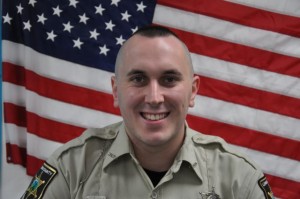
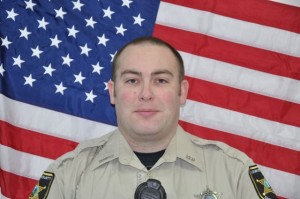
 Have you stopped to thank an emergency medical services worker? Now is the time!
Have you stopped to thank an emergency medical services worker? Now is the time!










